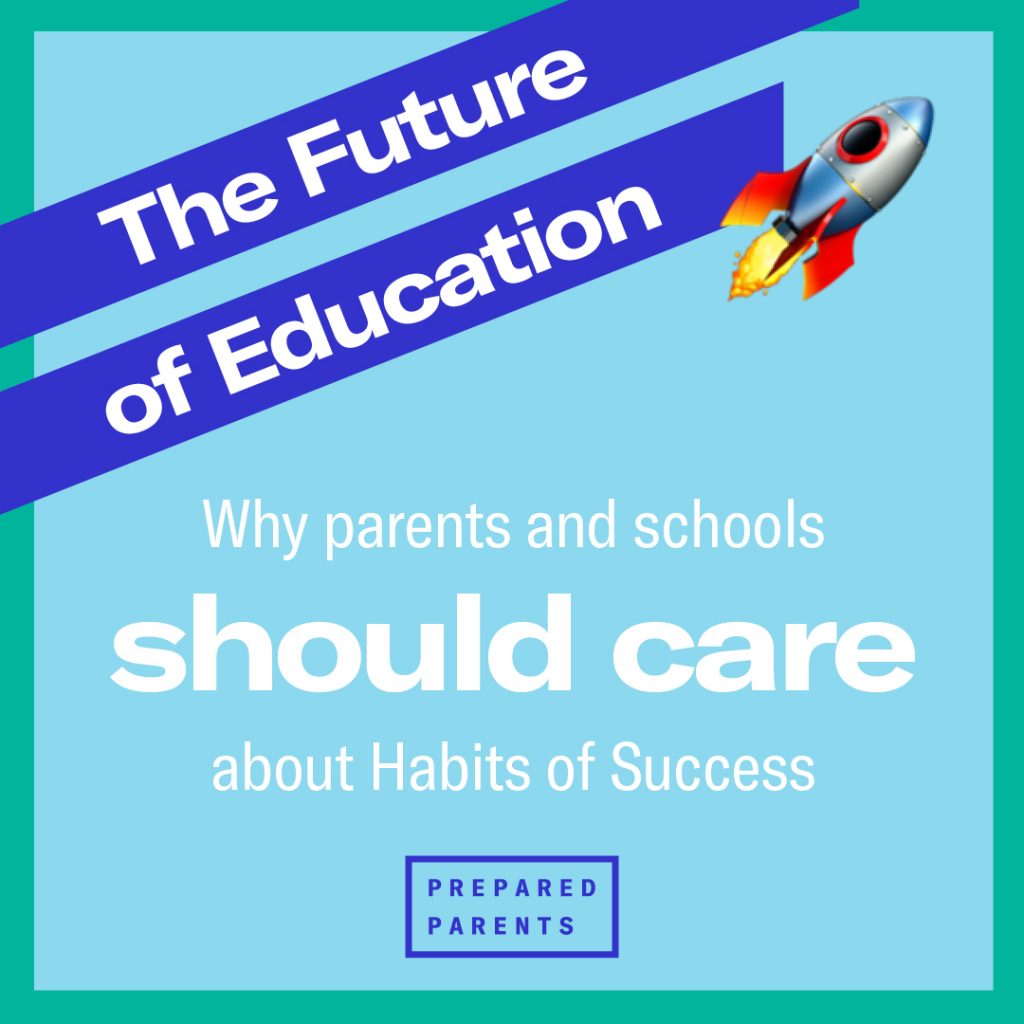
65% of kids entering elementary school this year will go on to work in as-yet unnamed fields. So how do we prepare them for the future? By helping them acquire the Habits and Skills that lead to success.
In this installment of our continuing series on the future of education, we lean on renowned educators Diane Tavenner and Michael Horn and leading psychologist, learning scientist, and author Angela Duckworth, to explain why parents should care about these powerful habits and skills. In particular, we focus on self-direction and collaboration.
Commonly used academic benchmarks don’t measure the whole kid. They don’t consider mindsets and behaviors that support both academic achievement and overall well-being—things like time management, working with others, the ability to self-direct—that are vital for our kids to thrive. There are two in particular that are building blocks for life.
- Ability to self-direct. That is to say, kids taking ownership of their learning and driving it forward. There is this common belief that some kids are born innately independent, or with specific characteristics that make them successful. But Duckworth points out that something like self-direction needs to be practiced, and learning it takes time. As parents, we’ve all been through the frustration of seeing our kid give up on something or not even try. Research reminds us that kids may be giving up learning something not because they are lazy, but because they are not making progress. If this sounds familiar, try these 5 power behaviors of a self-directed learner as a jumpstart for your kid.
- Collaboration. Life is a team sport, but education in most schools is treated as a solo act. Duckworth points out that new research is showing that at the core of being a really terrific team player is empathy—being sensitive to the emotions and thoughts of other people on your team and putting your team’s performance above your own individual success.
“There is a rainbow of things that we want all kids to develop, and if they do, they will thrive. Not only academically, but also physically, socially and emotionally… You can’t actually have academic success unless you begin to develop and work on these [habits and skills] in schools.”
– Angela Duckworth
Bestselling author of the book Grit
We dig deeper into how to make your kid an effective collaborator and team player👇🏾. You can also listen to the entire podcast or read the transcript here.
- Each student having a mentor—an adult in the school building—that meets with them regularly, 1:1, to check-in, set goals, focus on Habits of Success and ultimately be an advocate when needed. This develops a secure attachment, which is critical to kids knowing they matter and ultimately being successful. Some educators use the “2×10 strategy“ to connect with students who need extra support.
- Students being given the opportunity to learn in different ways, and at different paces, all the while taking ownership of their learning and understanding how they learn best. Alvin Toffler once said, “The illiterate of the 21st century will not be those who cannot read and write, but those who cannot learn, unlearn, and relearn.”
- Promoting learning-by-doing through project-based learning (PBL) and by solving real-world problems.
- Each kid learns differently and needs different levels of support. Psychologist Lev Vygotsky coined the term “zone of proximal development,” or ZPD, to describe a kid’s sweet spot of learning. The Zone takes a learner from their existing capabilities to greater skills that they have the potential to acquire, with guidance and encouragement. What this looks like in our kids is productive struggle, and it leads to better learning.
A start could be asking for funds spent on security at schools to be reallocated to educators, counselors, and ultimately 1:1 mentorships for all students. Despite this astounding shortage of support staff, many schools have prioritized funding law enforcement for school security. Far from providing mentorship, coaching, and a safety net for students who need it, many schools are increasing a student’s likelihood of entering the criminal justice system. So when school starts, ask your school’s leaders for these numbers for your district.
More than 90% of public schools fail to meet professionally recommended student-to-staff ratios. The national student-to-counselor ratio is 444:1, meaning that counselors are seriously overworked with student caseloads 78% greater than what is recommended by experts. There are 2,106 students to each social worker, nearly 10 times the recommended ratio of 250 students to each social worker. And 43% of public schools nationwide don’t employ a psychologist.


